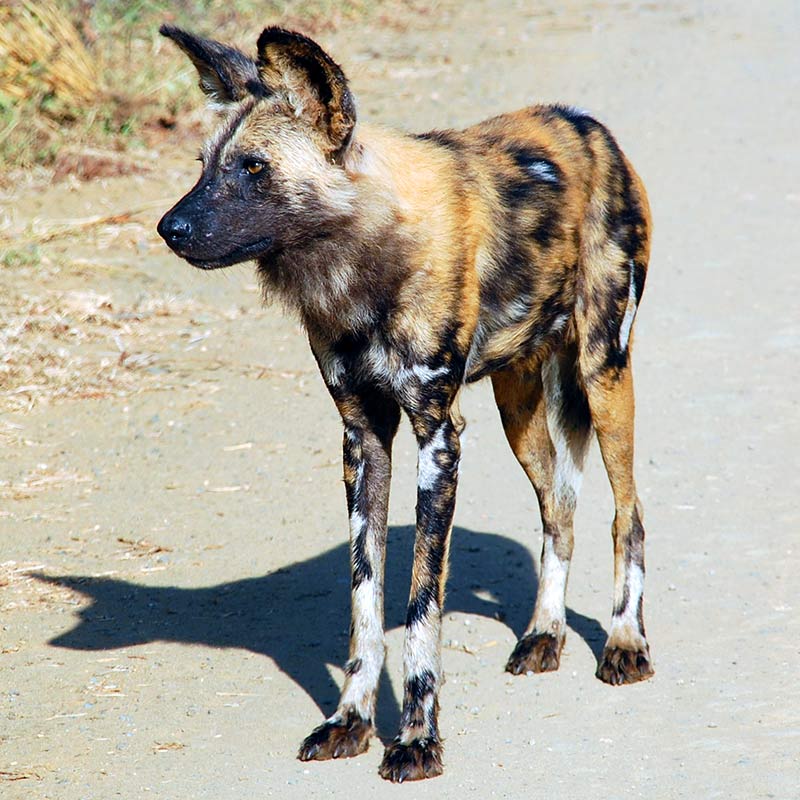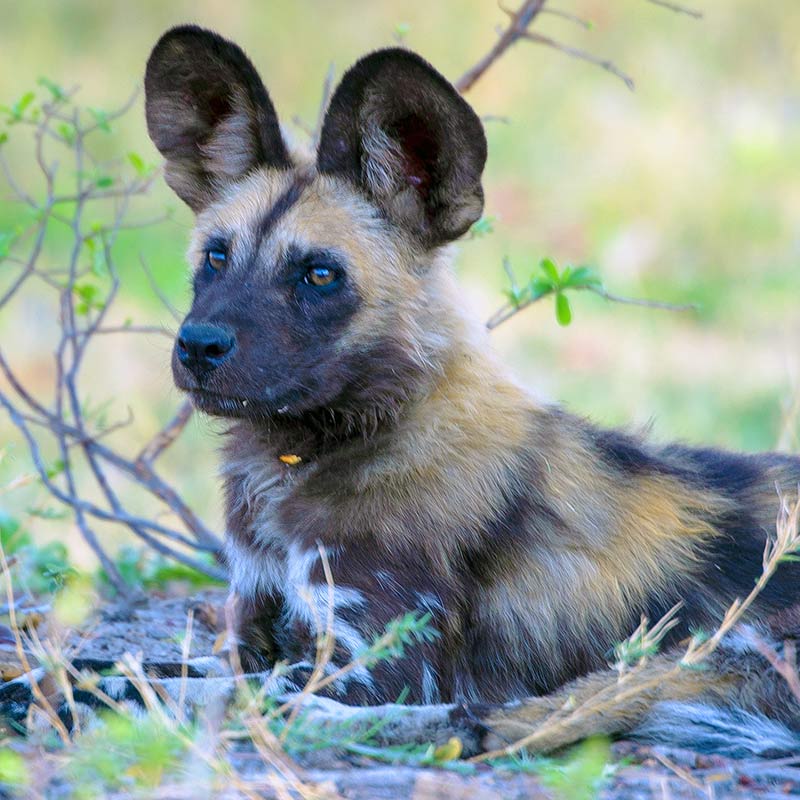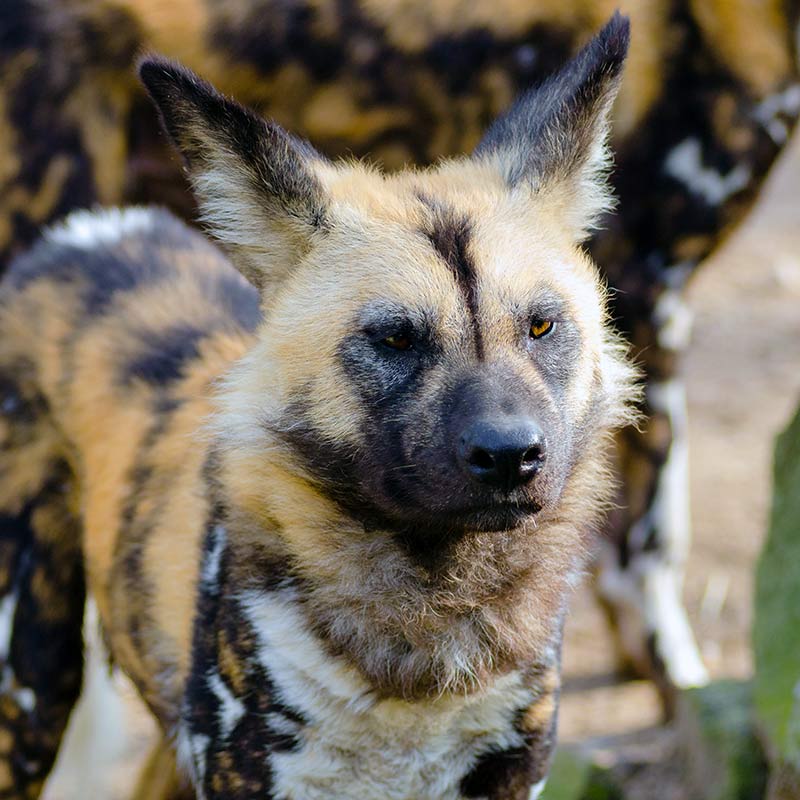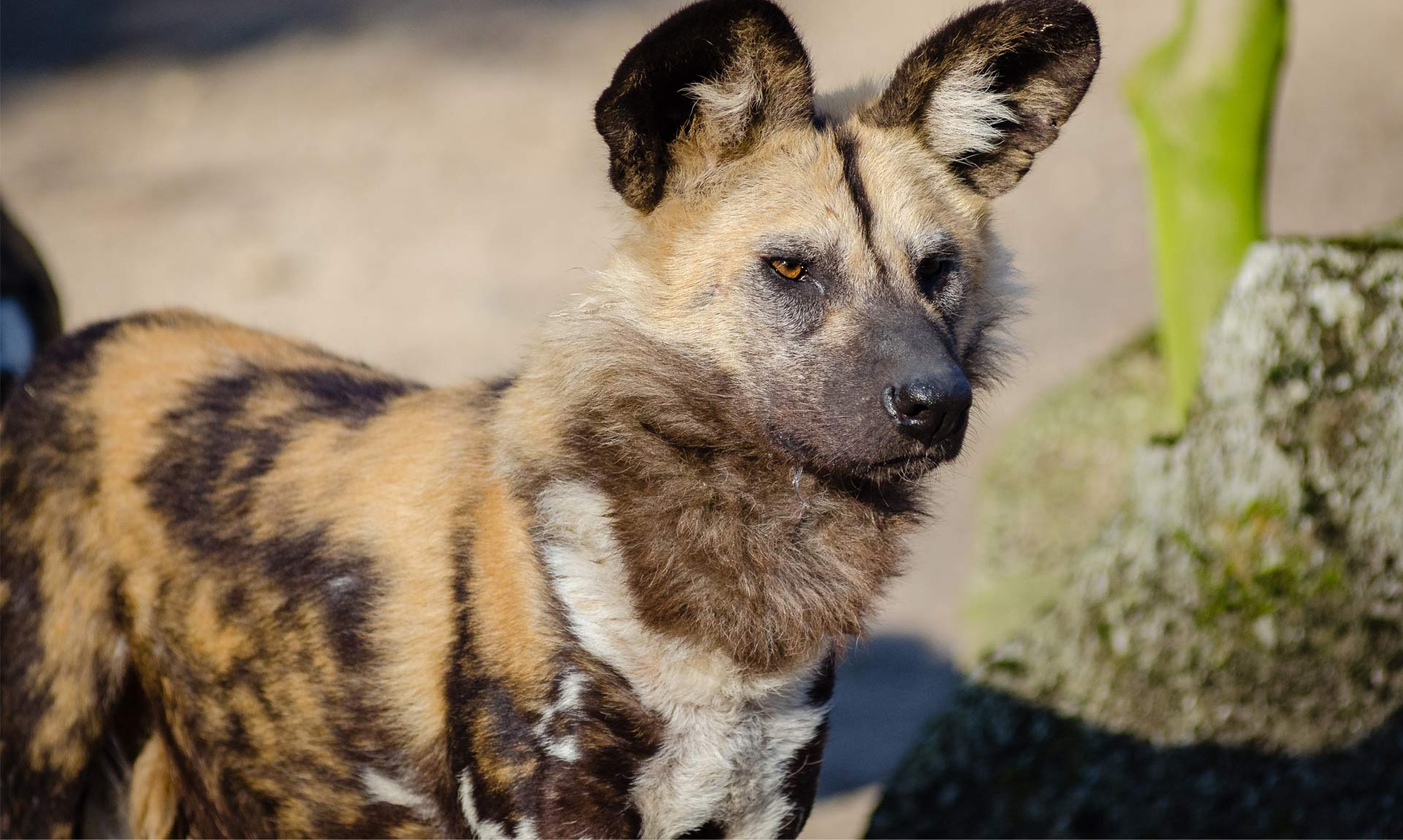AFRICAN WILD DOGS LEFT

APPROXIMATELY 1,409 REMAIN IN THE WILD
 IN 1984 THERE WERE APPROXIMATELY 10,000 IN THE WILD
IN 1984 THERE WERE APPROXIMATELY 10,000 IN THE WILD
 STRONGHOLDS: CHOBE NATIONAL PARK IN BOTSWANA, RUAHA NATIONAL PARK IN TANZANIA AND KRUGER NATIONAL PARK IN SOUTH AFRICA
STRONGHOLDS: CHOBE NATIONAL PARK IN BOTSWANA, RUAHA NATIONAL PARK IN TANZANIA AND KRUGER NATIONAL PARK IN SOUTH AFRICA
 THE AFRICAN WILD DOG IS CLASSIFIED AS CRITICALLY ENDANGERED ON THE IUCN RED LIST
THE AFRICAN WILD DOG IS CLASSIFIED AS CRITICALLY ENDANGERED ON THE IUCN RED LIST
WILD DOG FACTS

The African Wild Dog is one of the most social and distinctive of the species classified as ‘canids’. Other canids include dogs, wolves, coyotes, foxes, jackals and dingoes. Their short, stiff coat consists of yellow, grey, black and white splotches of hair. Each African Wild Dog has a unique coloration pattern. Similar to a human fingerprint, their pattern is used by researchers to identify individuals. Males are typically larger than females. African Wild Dogs have a life span of between 10 – 12 years. African Wild Dogs have an average of 10 pups per litter, following a 70-day gestation period. This litter size is the highest of all canids.
Like other canids, African Wild Dogs travel in packs consisting of 2 – 40 individuals. New packs are formed when a small group of the same sex leaves the main pack to seek a small group of the opposite sex.
WILD DOG HABITATS
 African Wild Dogs are found in a wide range of habitats, including arid areas, semi-deserts and grassy plains. They can also be found in tropical and subtropical regions, as well as woodlands, forest and mountainous habitats. African Wild Dogs can be found in regions of Southern Africa. Regions include, Botswana, Burkina Faso, Ethiopia, Kenya, Mozambique, Namibia, Niger, the Serengeti, South Africa, South Sudan, Zambia and Zimbabwe. Their home ranges can be as large as 3,000 square miles.
African Wild Dogs are found in a wide range of habitats, including arid areas, semi-deserts and grassy plains. They can also be found in tropical and subtropical regions, as well as woodlands, forest and mountainous habitats. African Wild Dogs can be found in regions of Southern Africa. Regions include, Botswana, Burkina Faso, Ethiopia, Kenya, Mozambique, Namibia, Niger, the Serengeti, South Africa, South Sudan, Zambia and Zimbabwe. Their home ranges can be as large as 3,000 square miles.
WILD DOG THREATS

The principal threats to African Wild Dogs are habitat fragmentation and population extinction due to epidemic disease. Larger populations have a higher chance of recovery from these threats. But, as human population expands, the regions, in which African Wild Dogs were once able to roam freely, are disappearing.
As mentioned, African wild dogs require large home ranges to support viable populations. Recent habitat fragmentation, caused by human population growth, agriculture, settlement, and the building of roads, has caused a population decline. Throughout Africa, the African Wild Dog has a reputation for attacking livestock. As a result, they are shot and poisoned by farmers who blame them when other predators have killed livestock. They are also susceptible to diseases carried by domestic dogs, such as canine distemper and rabies.







